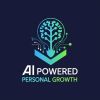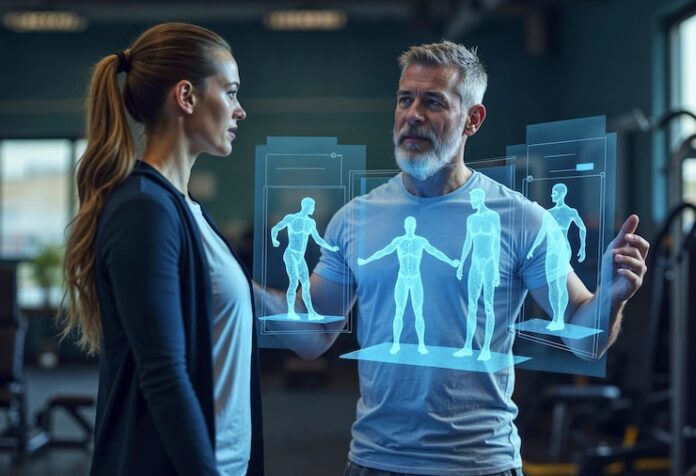Burnout is more than just being tired after a long day. It’s a state of chronic emotional and physical exhaustion, often caused by constant pressure, lack of rest, and poor self-care. In today’s hyper-connected world, burnout affects people across all professions, especially those juggling demanding jobs, home responsibilities, and non-stop digital distractions. You may feel unmotivated, overwhelmed, emotionally drained, and physically worn out. Your productivity drops, your mood darkens, and your body starts showing signs, like headaches, sleep issues, or even stomach problems. It becomes a vicious cycle of overworking and under-recovering, leading to long-term consequences if left untreated. Technology often gets blamed for burnout, but when used wisely, it can also become a source of support. Artificial Intelligence (AI) is emerging as a smart companion in the journey toward mental clarity and emotional balance. AI doesn’t replace professional help or healthy habits, but it supplements them by keeping you mindful, organized, and emotionally in tune.
🧘♂️ How AI Detects Early Signs of Burnout
The most powerful feature of AI in wellness is real-time monitoring and prediction. AI-based systems use pattern recognition and behavioral data to identify early signs of burnout before you even notice them. These systems study your activity, heart rate, sleeping habits, and emotional trends to highlight potential red flags.
Through your smartphone or wearable device, AI can:
- Detect when your daily movement decreases and alert you to stretch or take breaks.
- Notice changes in your tone of voice, typing speed, or texting patterns, often linked with mental fatigue.
- Analyze your sleep patterns and detect signs of poor recovery or chronic stress.
- Monitor changes in how often you respond to messages or cancel tasks.
- Recommend proactive actions like mood tracking, breathing exercises, or guided reflection.
By doing this, AI doesn’t just collect data, it turns it into insights. Imagine an assistant that notices you skipped meals, slept poorly, and skipped your walk three days in a row. Before burnout escalates, it nudges you with gentle alerts and customized support.
![]() 📲 AI-Powered Apps That Improve Mental Clarity
📲 AI-Powered Apps That Improve Mental Clarity
Modern AI-based wellness apps do more than offer generic advice. They’re built on years of behavioural psychology research and trained to recognize your emotional states based on subtle cues. Many are designed to simulate a calm, therapeutic conversation or guide your thoughts in healthier directions.
A few standout apps and tools include:
- Wysa – Combines cognitive-behavioral therapy (CBT) techniques with a chatbot that helps you process your emotions and deal with daily stress.
- Woebot – Uses humor and science to walk you through negative thinking and reframe it positively.
- Mindsera – Offers visual journaling with AI insights, helping you understand mental blocks or repetitive worries.
- Youper – Blends AI with emotional intelligence to coach you through mood swings or anxiety.
- Calm AI – A virtual coach that creates a personalized routine for better sleep, deeper meditation, and calmer evenings.
These apps are not intended to replace therapy, but they can support your mental clarity and make emotional self-care a daily habit, just like brushing your teeth.

🍏 Building Long-Term Healthy Habits with AI
One of the most effective ways AI supports wellness is by helping you build sustainable habits. Burnout often stems from unbalanced routines, lack of rest, and reactive behavior. AI helps you shift from chaotic days to structured flow by making habit-building easier.
You don’t need to overhaul your entire lifestyle. Instead, AI makes small, smart changes that compound over time. For example, if you’ve been stressed all week, your AI might:
- Suggest 20 minutes of walking instead of an intense workout.
- Recommend light meals that support digestion and sleep.
- Offer breathing reminders between long video calls.
- Block notifications when you need deep focus.
- Nudge you to journal or reflect after emotional events.
These micro-adjustments feel easy to follow. Over days and weeks, they become automatic. You begin to sleep better, wake up with more clarity, and handle tasks without the fog of mental fatigue. Your schedule feels lighter, not because your tasks disappeared, but because your energy and mindset improved.
🌅 Shifting from Reactive to Proactive Self-Care
Many people only think about self-care when they’ve reached their breaking point. But real wellness is proactive, it’s about checking in with yourself before problems explode.
AI makes proactive self-care easy by offering predictive support based on your behavior. For instance:
- If your mood drops for several days, it might offer a reflection prompt.
- If your workdays get longer, it may suggest a digital detox before bed.
- If it senses rising anxiety, it might launch a calming soundscape or breathwork session.
- If your movement drops, it could recommend standing stretches or fresh air.
These features work silently in the background. They adapt to you. The goal isn’t perfection, it’s progress. By showing you trends in your emotions, energy, and activity, AI makes you more aware of when to rest, recharge, or refocus.

🧩 Achieving Balance That Actually Lasts
Finding balance isn’t a one-time fix, it’s a mindset. AI doesn’t just help during burnout; it supports you every day, reminding you to pause, reframe, and reconnect. Over time, you experience deeper benefits that last.
Long-term users of AI wellness platforms often notice:
- Improved emotional control and faster recovery from stress
- Consistent energy throughout the day
- Better work-life boundaries and time awareness
- Stronger focus and fewer mental crashes
- A deeper sense of purpose in daily tasks
This isn’t magic. It’s mindfulness, structure, and reflection, built into technology. With the help of AI, you create a wellness rhythm that fits your real life, not someone else’s perfect plan.
Conclusion: Let AI Be Your Wellness Partner
You don’t have to figure everything out alone. Burnout is real, but so is recovery. With the right AI tools, your smartphone or smartwatch can become your personal coach, therapist, and motivator rolled into one. AI won’t do the work for you. But it will support you every step of the way, whether you need a moment of calm, a nudge to move, or a reflection on your mood. It helps you listen to yourself before things spiral out of control. Start by installing one app. Set one wellness goal. Let AI track it. Then adjust. The more you use it, the more it learns about you, and the more balanced, intentional, and fulfilled you become.


